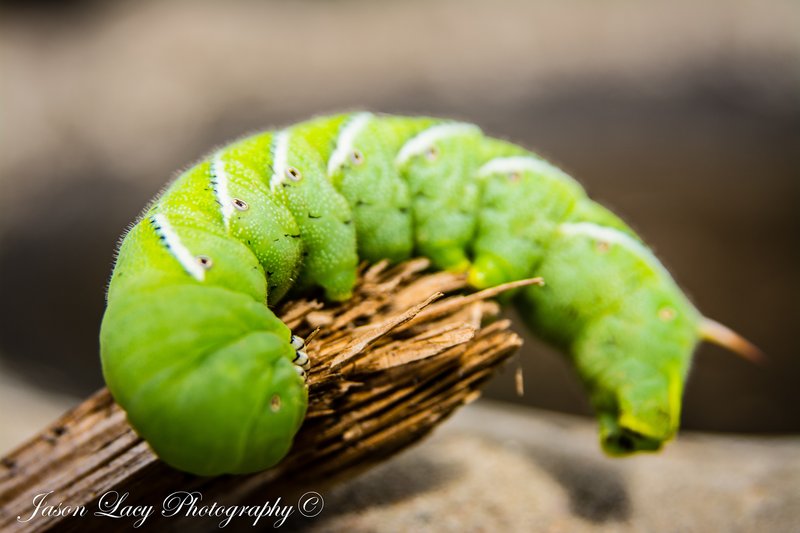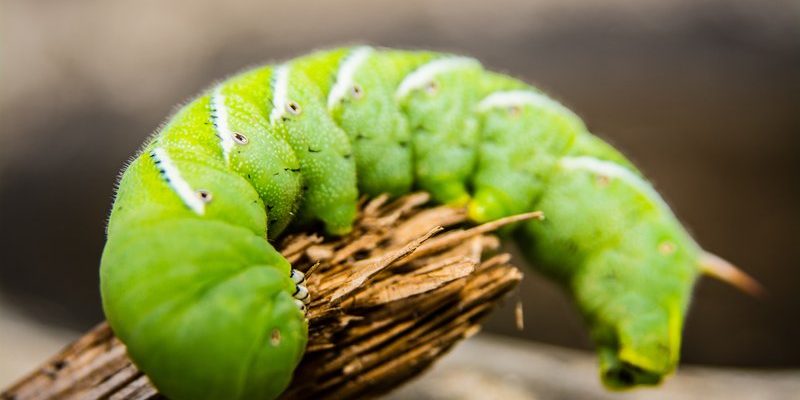
So, why bother studying hornworms? Well, they’re not just food for birds and other wildlife; they also play an essential role in the life cycle of moths. Understanding their behaviors can shed light on broader ecological concepts, making it easier for students and curious minds to grasp complex topics. Plus, it’s a fun project for classrooms or home learning! With resources like the *Hornworm Behavior Tracker* app, documenting their adventures has never been easier.
What Are Hornworms?
Hornworms are the caterpillar stage of moths, notably the *Manduca sexta*, often referred to as the tobacco hornworm. You might encounter them while gardening, especially if you grow tomatoes or peppers, as they love munching on these plants. They can grow up to 4 inches long, and their plump green bodies often sport a characteristic horn at their rear. This horn gives them their name and serves as a defense mechanism—making them look less appealing to predators.
One remarkable trait of hornworms is their ability to change color slightly when under stress. If you’ve ever found one in your garden, you might have noticed their vibrant green hue, which helps them blend in with leaves. However, when they’re in danger, they can take on a more muted tone, making them less visible. This fascinating behavior is just one of many reasons why documenting hornworm behavior can be an enlightening experience.
Setting Up Your Observation Area
To kick off your hornworm documentation project, the first step is setting up an ideal observation area. If you’re in a classroom, a small terrarium can serve as an excellent space for observation. You just need to ensure it has adequate ventilation and space. For home projects, your backyard or garden could be the perfect spot!
Here’s a quick checklist for your observation setup:
- Terrarium or Container: A clear container helps in observing behavior closely.
- Plants: Provide plenty of leaves, particularly from tomato plants, since they’re a favorite for hornworms.
- Water Source: A small shallow dish with water—be careful not to let them drown!
- Light Source: Natural light is great, but avoid direct sunlight to prevent overheating.
Creating a comfortable environment will encourage hornworms to exhibit their natural behaviors, making it easier for you to document and learn.
Understanding Hornworm Behavior
Now that your observation area is set up, it’s time to dive into the behaviors you’ll want to document. Hornworms display several interesting actions that can greatly enhance your educational project. For example, they are known for their eating habits, which can be mesmerizing to watch. They can consume a significant amount of plant material in a short time, often leaving behind only skeletonized leaves.
Another behavior to note is their movement patterns. Hornworms are not the quickest creatures. They often move in a slow, deliberate manner, which makes sense—they want to avoid drawing attention to themselves as potential prey. Observing how they interact with their environment can reveal a lot about their instincts.
Lastly, keep an eye on their molting process. As hornworms grow, they shed their skin multiple times. This transformation is a critical part of their development, and documenting it will show you the lifecycle stages clearly.
Documenting Your Findings
So, how exactly do you document all these fascinating behaviors? You can approach this in several creative ways! One effective method is to create a daily journal or log where you record your observations. Be sure to include:
- Date & Time: When did you observe the hornworms?
- Environmental Conditions: What was the weather like? Were they in sunlight or shade?
- Behavioral Notes: What were they doing? Eating, moving, or molting?
- Sketches or Photos: Visuals can add a fantastic touch to your documentation.
You might also consider using video recordings. A simple smartphone camera can capture their activities, allowing you to share your findings with friends and classmates later. This method gives you a chance to revisit the most intriguing moments and offers a different perspective on their behavior.
Why It Matters: Ecological Insights
Understanding hornworm behavior isn’t just about curiosity; it’s about appreciating the interconnectedness of ecosystems. These caterpillars provide food for various predators, including birds and other insects. By studying them, you gain insight into food chains and the delicate balance of nature.
Moreover, hornworms are also indicators of plant health. If you notice an explosion of hornworm activity, it could mean that local vegetation is thriving—or it might indicate a pest problem you should address. By documenting them, you’re not just observing insects; you’re gaining knowledge that can be applied to larger environmental issues.
Here’s the thing: the more we learn about creatures like hornworms, the better equipped we are to understand and protect our ecosystems. If we can connect classroom lessons to real-world applications, we’ll inspire a new generation of environmentally conscious individuals.
Sharing Your Discoveries
After you’ve gathered your observations, why not share your findings? You could create a presentation for your classmates, compile your notes into a booklet, or even start a blog to showcase your work! Sharing your experiences fosters a community of learners who can discuss and grow together.
Don’t forget to involve others! Organizing a “Hornworm Day” where everyone can share their findings can build camaraderie and encourage curiosity. Plus, it can spark discussions on related topics like metamorphosis and biodiversity.
Here’s a fun idea: you could set up a social media page dedicated to your observations. That way, other enthusiasts can follow along or even contribute their own experiences.
Final Thoughts on Hornworm Observation
Documenting hornworm behavior can be a rewarding educational endeavor that connects you to nature in a meaningful way. From setting up your observation area to understanding their habits, every step offers unique insights that deepen our appreciation for the natural world.
Honestly, you might be surprised by what you discover. Hornworms can be a gateway to broader discussions about ecology, biology, and environmental responsibility. So grab your notebook or camera and start documenting—you might just find your new favorite project!

